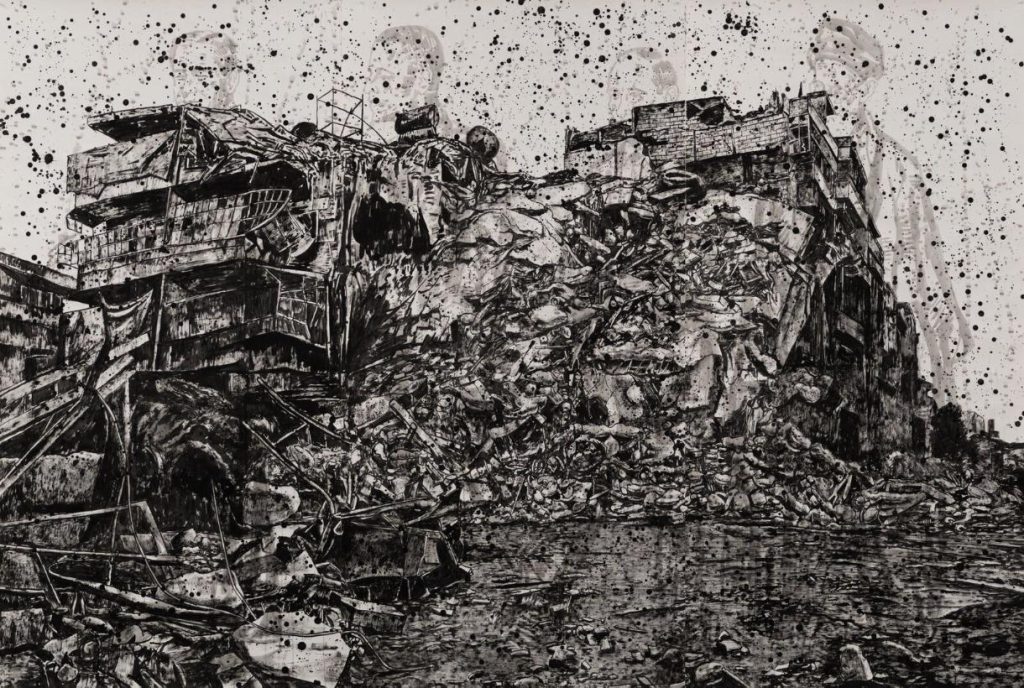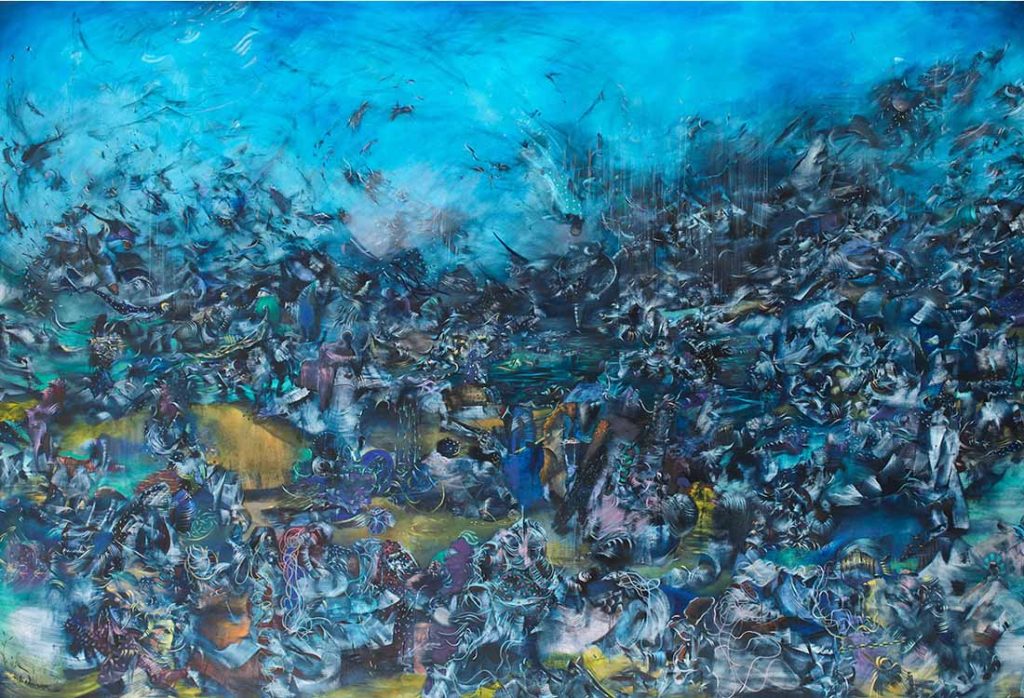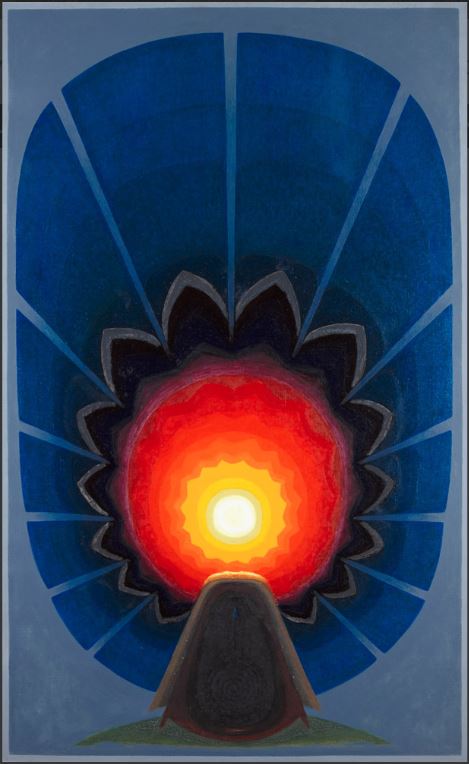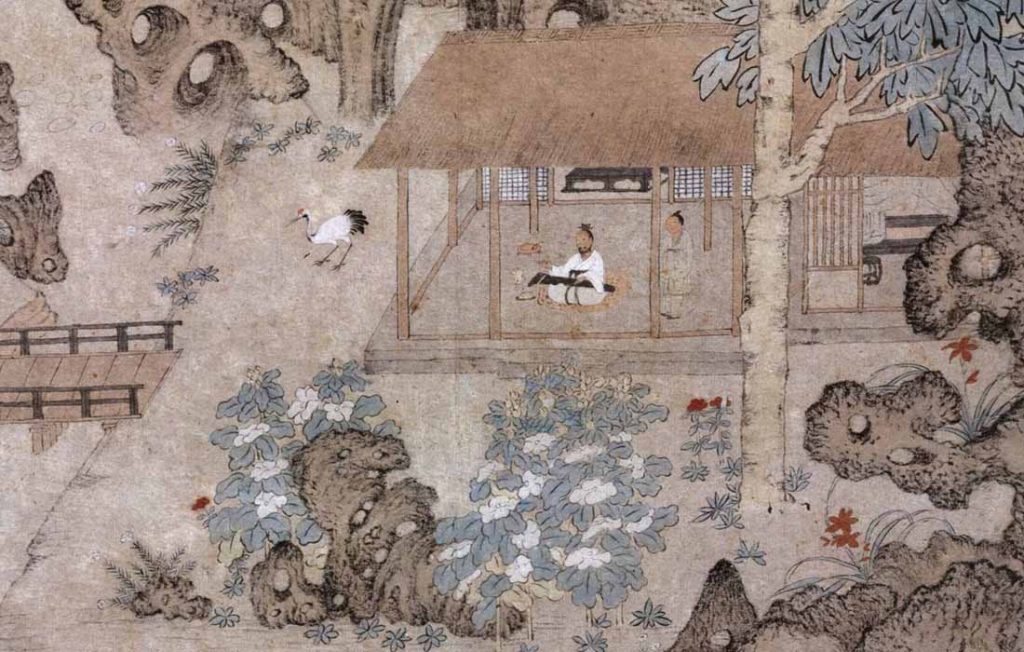S. N. Surti, Air-India, New York, 1967
When Air-India launched “the Maharaja” as their mascot in 1946, he soon became a larger than life figure, and not only adorned innumerable posters but also became an important part of cultural life, often even rankling the preferences of notable dignitaries. Conceived by Bobby Kooka and illustrated by Umresh Rao, the Maharaja sported a large moustache, turban, and prominent belly. He was usually portrayed with a strong sense of humor and winking satire. . . as he models hospitality and refinement in New York in the poster above, he is dressed up as a Playboy Bunny and serves drinks to a (very) young Hugh Hefner.
Attracted to the history associated with these posters and their whimsy, when Sanjay Kapoor, owner and 4th-generation dealer of Kapoor Galleries, came across a collection of Air-India posters at auction, he purchased the entire group. On one hand, these fit in well with Kapoor Galleries’ existing collection of 20th century travel posters, which “enticed and mesmerized all who viewed them with the possibilities of exploring a new world” (for more on Kapoor Galleries' travel posters, click here). However, seeing an alternative path for these pictures, Kapoor then coordinated with Poster House in Chelsea to present these posters in an exhibition this fall where the context in which they were created and viewed could be explored and a large audience could enjoy them.
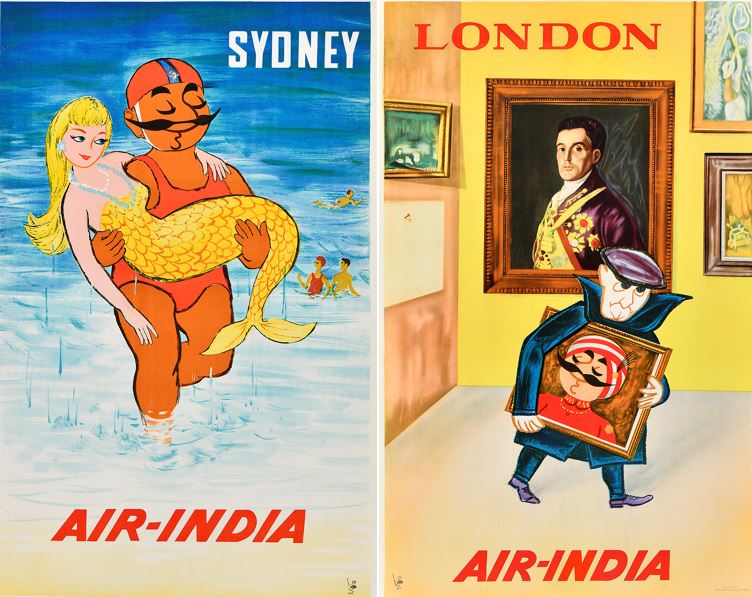
L-R: V.V. Shetye, Air-India/Sydney, 1963 and K.K. Save, Air-India/London, 1962
The exhibition, Air-India’s Maharaja: Advertising Gone Rogue will be on view from September 9th through February 12th at Poster House. Illustrated with numerous posters that show the Maharaja in his many guises, the show’s accompanying commentary surveys the history and cultural importance of the Maharaja both in India and globally. Along with Sanjay Kapoor, the show is curated by Carly Johnson and Sophia Williamson, Co-Directors of Kapoor Galleries.
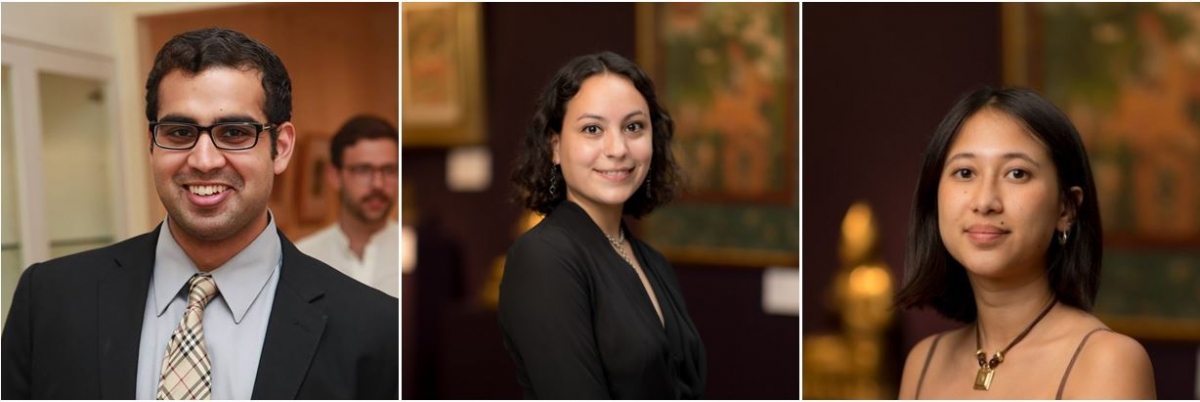
Team Maharaja: (L-R) Sanjay Kapoor, Carly Johnson, and Sophia Williamson
Any Maharaja would be pleased to have these three professionals on his staff. After completing degrees in computer processors and neuroscience at Stony Brook and Indian art at SOAS, Sanjay Kapoor augments his leadership at the gallery with senior roles at the International Society of Appraisers (ISA) and the Art and Antique Dealers League of America (AADLA). Carly Johnson recently completed her degree in Mathematics from Fordham University and has experience as a radio audio engineer. Sophia Williamson similarly studied Chemistry, along with Art History at Fordham and spent a semester bringing computer skills to archaeology work in Rome.
For more details about the exhibition at Poster House, click here. While you are waiting for the show to open in September, enjoy the stunning virtual exhibitions available now on Kapoor Galleries’ website, click here.
